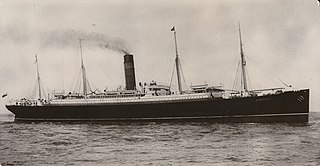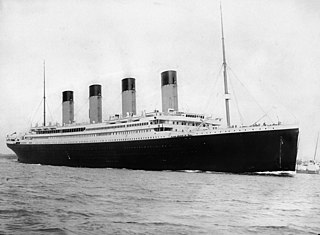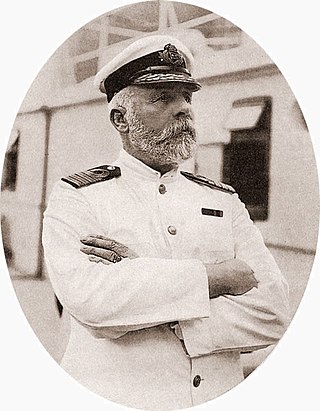Related Research Articles

USS Seawolf (SS-197), a Sargo-class submarine, was the second submarine of the United States Navy named for the seawolf.

An ocean liner is a type of passenger ship primarily used for transportation across seas or oceans. Ocean liners may also carry cargo or mail, and may sometimes be used for other purposes. Only one ocean liner remains in service today.

Akagi (赤城) was a steel-hulled, steam gunboat, serving in the early Imperial Japanese Navy. She was the fourth and final vessel to be completed in the four-vessel Maya class and was named after Mount Akagi in Gunma Prefecture.

The first USS Sunfish (SS-281), a Gato-class submarine, was the first ship of the United States Navy to be named for the ocean sunfish, Mola mola, a plectognath marine fish, having a deep body truncated behind, and high dorsal and anal fins.

The first USS Spadefish (SS/AGSS-411), a Balao-class submarine, was the first ship of the United States Navy to be named for the spadefish. Although she was commissioned late in the war and spent only one year in the Pacific war zone, she was able to run up a record of 88,091 tons in 21 ships and numerous trawlers sunk.

Tango Maru (丹後丸), originally named Rendsburg, was a cargo ship built in Germany in 1925. It was sunk by an American submarine on February 25, 1944, while in the service of the Imperial Steamship Co., a Japanese government-owned company. The sinking cost about 3,000 passengers and crew their lives.

CP Ships was a large Canadian shipping company established in the 19th century. From the late 1880s until after World War II, the company was Canada's largest operator of Atlantic and Pacific steamships. Many immigrants travelled on CP ships from Europe to Canada. The sinking of the steamship RMS Empress of Ireland just before World War I was the largest maritime disaster in Canadian history. The company provided Canadian Merchant Navy vessels in World Wars I and II. Twelve vessels were lost due to enemy action in World War II, including the RMS Empress of Britain, which was the largest ship ever sunk by a German U-boat.

Sir Arthur Henry Rostron, KBE, RD, RNR was a British merchant seaman and a seagoing officer for the Cunard Line. He is best known as the captain of the ocean liner RMS Carpathia, when it rescued hundreds of survivors from the RMS Titanic after the ship sank in 1912 in the middle of the North Atlantic Ocean.

A hell ship is a ship with extremely inhumane living conditions or with a reputation for cruelty among the crew. It now generally refers to the ships used by the Imperial Japanese Navy and Imperial Japanese Army to transport Allied prisoners of war (POWs) and romushas out of the Philippines, the Dutch East Indies, Hong Kong and Singapore in World War II. These POWs were taken to the Japanese Islands, Formosa, Manchukuo, Korea, the Moluccas, Sumatra, Burma, or Siam to be used as forced labor.

RMS Carpathia was a Cunard Line transatlantic passenger steamship built by Swan Hunter & Wigham Richardson in their shipyard in Wallsend, England.

SS Cymric was a steamship of the White Star Line built by Harland and Wolff in Belfast and launched on 12 October 1897.

RMS Titanic was a British passenger liner, operated by the White Star Line, which sank in the North Atlantic Ocean on 15 April 1912 after striking an iceberg during her maiden voyage from Southampton, England, to New York City, United States. Of the estimated 2,224 passengers and crew aboard, more than 1,500 died, making it the deadliest sinking of a single ship up to that time. It remains the deadliest peacetime sinking of an ocean liner or cruise ship. The disaster drew public attention, provided foundational material for the disaster film genre, and has inspired many artistic works.

SS Coptic was a steamship built in 1881, which was successively owned by the Oceanic Steam Navigation Company, the Pacific Mail Steamship Company, and the Japanese Oriental Steam Ship Co. before being scrapped in 1926. She was filmed by Thomas Edison in 1897 in one of his early movies. The movie is currently stored in the Library of Congress, archive.org and other internet archives.

"The captain goes down with the ship" is a maritime tradition that a sea captain holds ultimate responsibility for both their ship and everyone embarked on it, and in an emergency will either save those on board or die trying. Although often connected to the sinking of RMS Titanic in 1912 and its captain, Edward J. Smith, the tradition precedes Titanic by at least 11 years. In most instances, captains forgo their own rapid departure of a ship in distress, and concentrate instead on saving other people. It often results in either the death or belated rescue of the captain as the last person on board.

Convoy Hi-71 (ヒ-71) was one of the World War II Hi convoys of fast tankers and troop transports from Japan to Singapore. The heavily defended convoy was specially loaded with reinforcements for defense of the Philippines, and encountered a wolfpack of United States Navy submarines in the South China Sea after being scattered by an August 1944 typhoon. Personnel losses were high because heavy seas prevented rescue of crewmen from sunken ships.
The SS Yoshida Maru No. 1 was a Japanese cargo ship owned by Yamashita Kisen K. K. The ship was built in 1919 by Asano Shipbuilding Company, at Tsurumi-ku, Yokohama, and sank on 26 April 1944 with great loss of life.
The following index is provided as an overview of and topical guide to Wikipedia's articles on recreational dive sites. The level of coverage may vary:

Recreational dive sites are specific places that recreational scuba divers go to enjoy the underwater environment or for training purposes. They include technical diving sites beyond the range generally accepted for recreational diving. In this context all diving done for recreational purposes is included. Professional diving tends to be done where the job is, and with the exception of diver training and leading groups of recreational divers, does not generally occur at specific sites chosen for their easy access, pleasant conditions or interesting features.
References
- ↑ Hendrickson, Robert A. (1992). The Ocean Almanac. London: Hutchinson Reference. p. 278. ISBN 0-09-177355-5.
1912 - Kiche Maru. Over 1,000 were lost on 28 September, when this Japanese steamship sank off the Japanese coast in a storm
- ↑ McKenna, Robert W. (2003). The Dictionary of Nautical Literacy. Camden, Me: International Marine Publishing. p. 193. ISBN 0-07-141950-0.
Kiche Maru, Japanese Steamship that sank off the coast of Japan in a storm on 28 September 1912, with the loss of more than a thousand lives. News of the tragedy was overshadowed by the loss of the RMS Titanic months before
- 1 2 "Ruin in Wake of Typhoon" (PDF). The New York Times . 27 September 1912. p. 4.
The Kieko Maru foundered off Enshu and the whole of her crew and passengers were lost. At Osaka 20,000 houses were ruined and all the breakwaters and the harbor piers were washed away. At Nara the thousand-year-old Kasuga Shrine collapsed into ruins
- ↑ "Typhoon in Japan". Otautau Standard and Wallace County Chronicle. 24 December 1912. p. 1.
Of the merchant marine the loss is reported of the Umegaka Maru, a vessel of some 3,000 tons, of the Shimonoseki Fusan Line. The water entered her whilst she was anchored outside Shimonoseki. ... The Keiko Maru Foundered off Nagoya, with 38 men on board ...
- ↑ Hoffman, Mark S. (1923). The World Almanac and Book of Facts. Newspaper Enterprise Association. p. 167. Retrieved 2008-05-26.
1912 Sept. 28. Japanese steamer Kickermaru sunk off coast of Japan: 1,000
- ↑ Proceedings of the United States Naval Institute. United States Naval Institute. p. 1239.
- ↑ "Hurricane Sweeps Japan" (PDF). The New York Times . 26 September 1912. p. 4.
A hurricane swept over Japan on the night of Sept. 22. There was much loss of life and heavy damage to property and shipping. All communications are badly interrupted. A torpedo boat and the destroyers Tachibana and Fubuki were sunk in Ise Bay
- ↑ Corey, Melinda; Ochoa, George (2001). Facts about the 20th century . New York: H.W. Wilson Co. ISBN 0-8242-0960-5.
- ↑ "Hundreds of People Perish in Typhoon". The Daily Northwestern. Oshkosh, Wisconsin. 26 September 1912. p. 1.